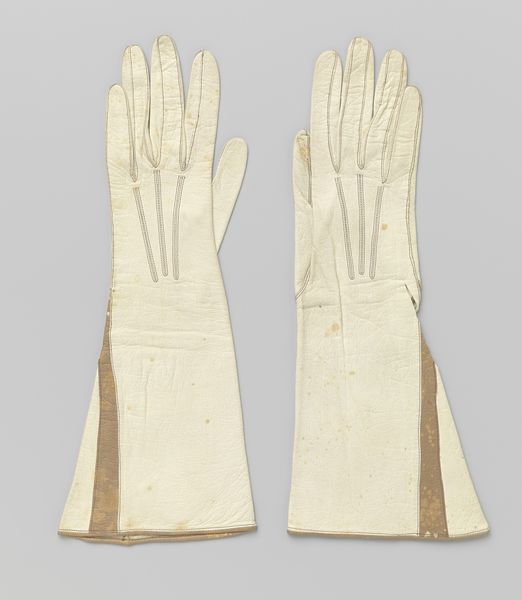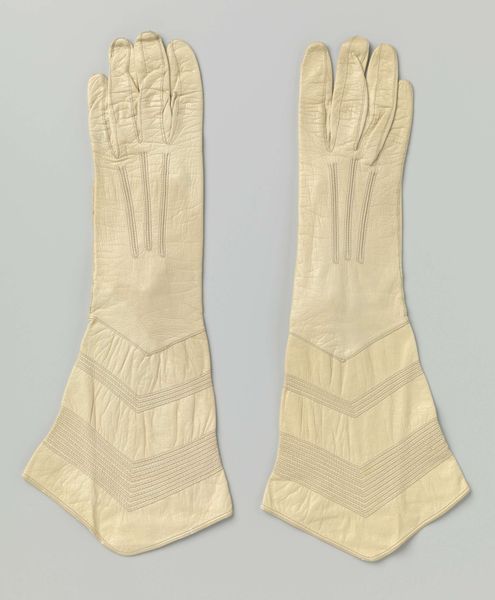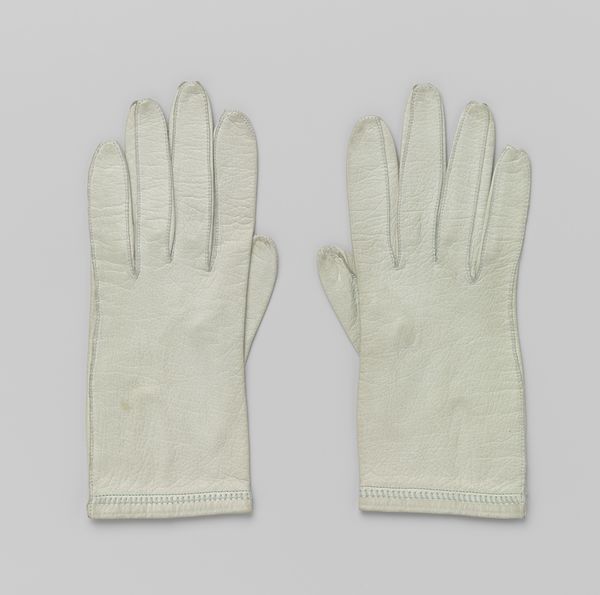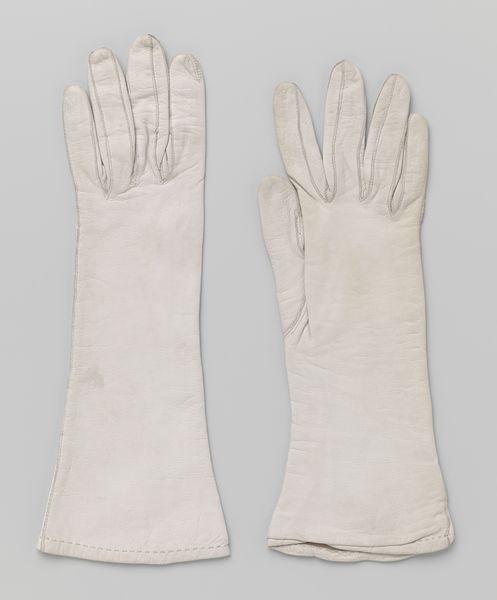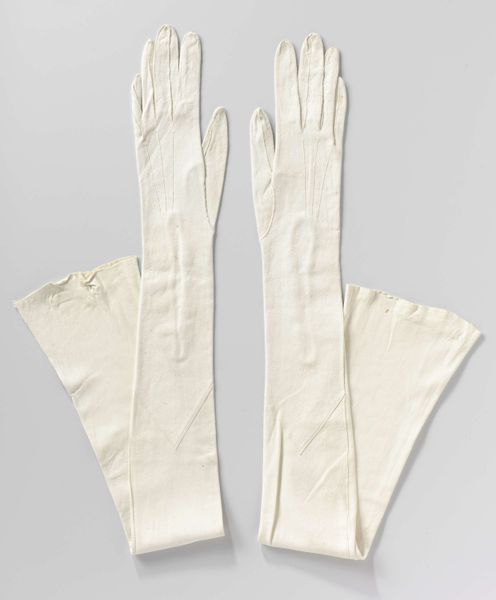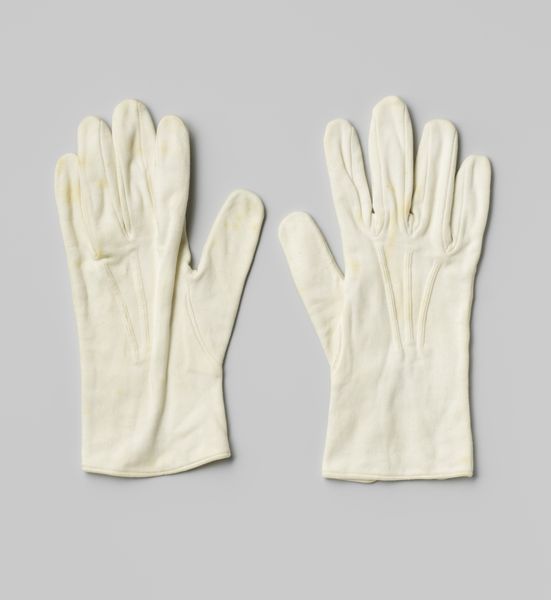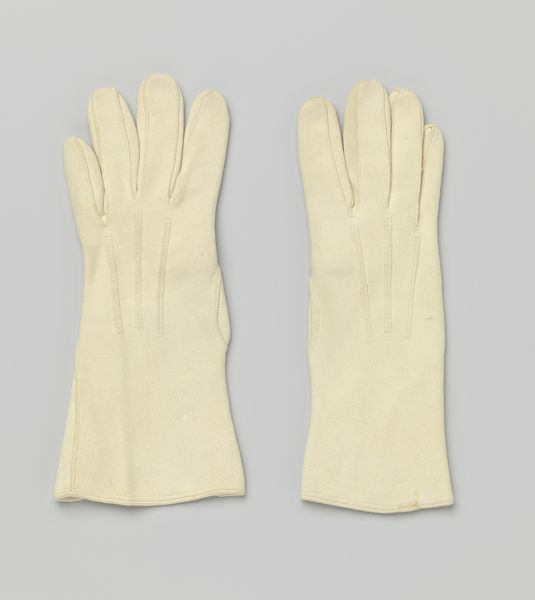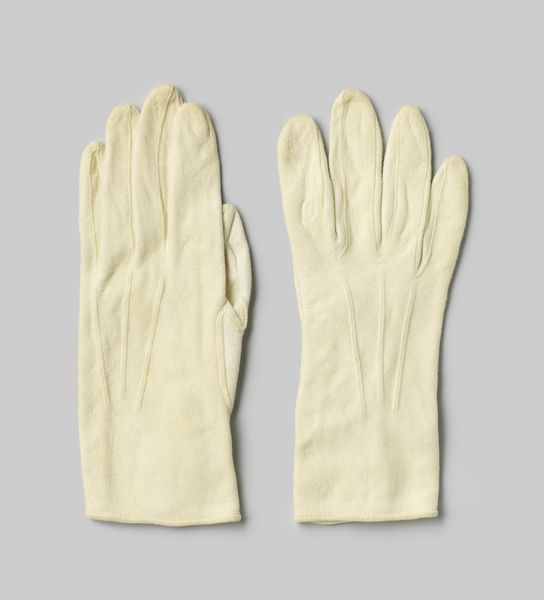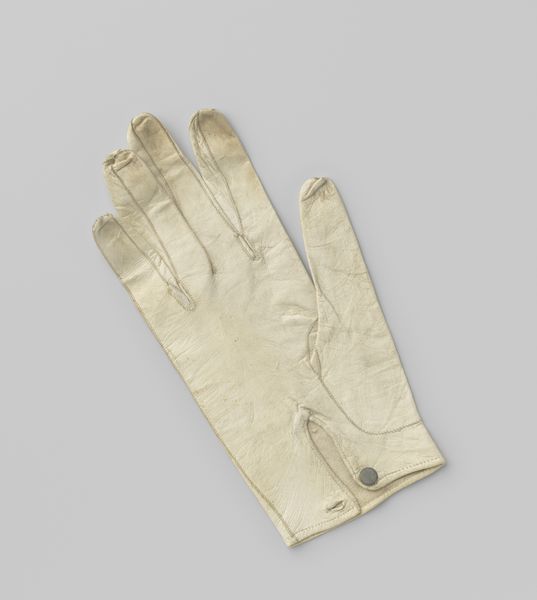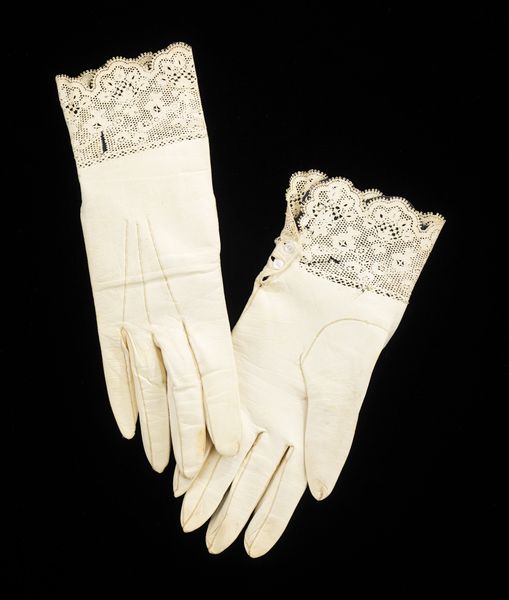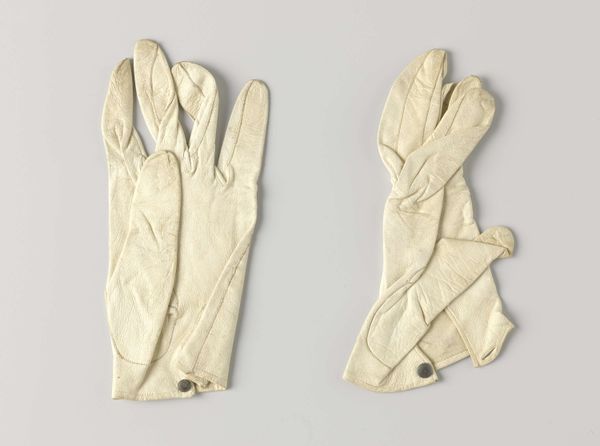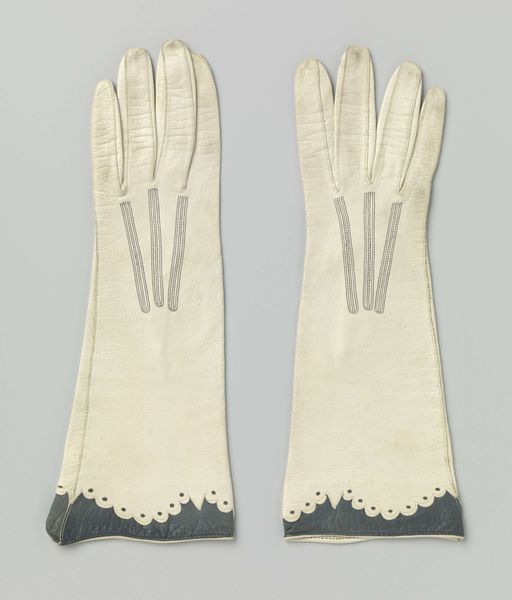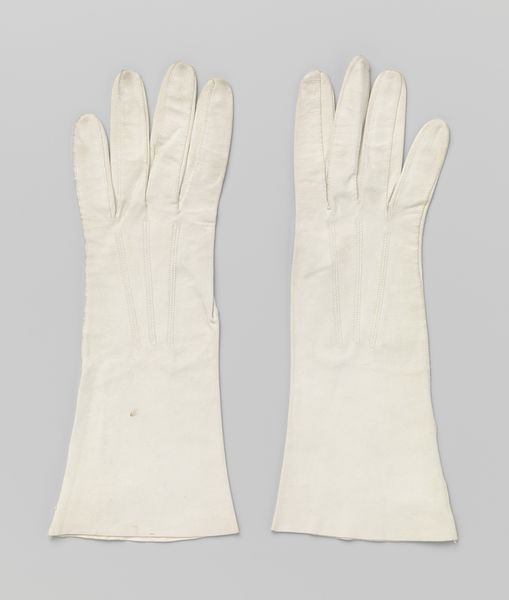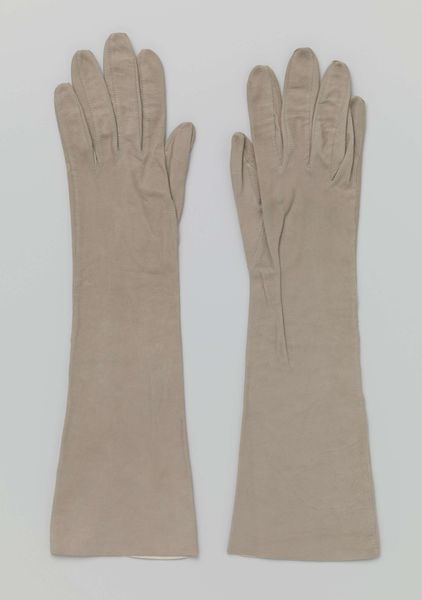
photography
#
contemporary
#
fashion mockup
#
product fashion photography
#
fashion merchandise
#
clothing promotion photography
#
photography
#
product design photgrpaphy
#
clothing photography
#
product mock up
#
clothing photo
#
retail photography
#
clothing design
Dimensions: length 26 cm, width 9.5 cm
Copyright: Rijks Museum: Open Domain
Editor: Here we have a photograph of "Handschoen van wit katoen," or "White Cotton Gloves," dating roughly from the 1950s to 1970. It's a straightforward image, but something about the stark white against the gray background feels…deliberate. What catches your eye in this piece? Curator: What I find immediately compelling is how this photograph freezes a moment in the garment's lifecycle: brand new, for sale, untouched by use. Think about the labor involved in the production of these gloves. Where was the cotton grown, who spun the thread, who manufactured the fabric and finally, who assembled these? Editor: That’s a lot to consider from a simple pair of gloves. Curator: Precisely. It prompts us to consider the systems of labor, production and distribution that went into making something that we might typically consider a common, everyday object. Editor: So, you're saying it's not just about the aesthetic of the gloves, but about their journey to becoming an object? Curator: Exactly. These gloves are not being presented as luxury items but mass produced, commonplace articles of clothing and adornment, which renders them accessible and within reach for most people. The ‘handschoen’ is as a commodity, and as a record of global exchange and social production. Where did this cotton originate and who wore them in the mid-20th century? What types of activities might the user do while wearing such garments, and for what specific uses were they originally marketed? Editor: I never thought about the social and historical context tied to these gloves! It’s given me a totally new way to think about the artwork and the ways items we use regularly become art, like Duchamp's Fountain. Curator: Precisely; everything from how this photograph emphasizes the production process, labor conditions and how consumption drives our global economy must be part of the discussion and dialogue about it.
Comments
No comments
Be the first to comment and join the conversation on the ultimate creative platform.
